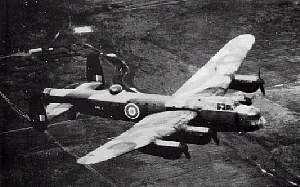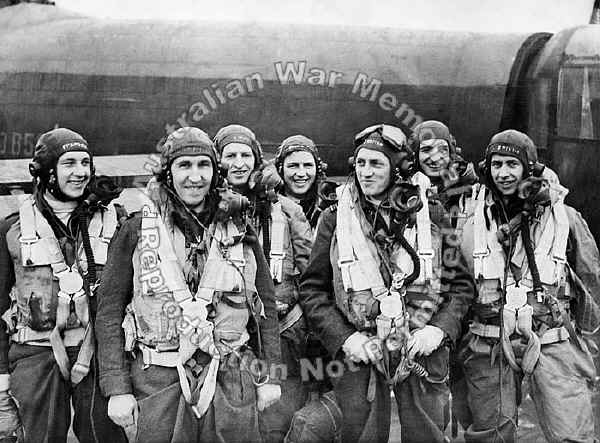 |
|
|||
|
|
||||
|
|
 |
Australians flew and crewed the "Lancs" in large numbers. In all nearly 5,000 Aussies died over enemy territory in the heavy bombers. They were there at the start, at the end and on the 'big jobs'. When the famous Dam Busters crippled the German war effort in the Ruhr Valley with the revolutionary new bouncing bombs there were Aussie accents on the radio. |
| Never in
the field of human conflict was so much owed by so many to so few. All
hearts go out to the Fighter pilots, whose brilliant actions we see with
our own eyes day after day, but we must never forget that all the time,
night after night, month after month, our bomber squadrons travel far
into Germany, find their targets in the darkness…aim their attacks,
often under the heaviest fire, often with serious loss…and inflict
shattering blows upon the whole of the technical and war-making
structure of the Nazi power. Winston Churchill.
(This is the part of his famous speech that
is not often reported). |
|
|
In September 1936 the Air Ministry published specifications calling for a twin-engine bomber to be powered by Rolls Royce engines. A. V. Roe & Company took up the challenge and developed the Avro Manchester. The company built 200 but it was not a success. In 1940 the aircraft was redesigned. The new aircraft, called the Avro Lancaster Mk I, made its first flight on 9th January, 1941. Powered by four Rolls-Royce Merlin engines, it had a maximum speed of 287 mph (462 km) and had a range of 1,660 miles (2,670 km). Armed with ten machine-guns it could carry 22,000 lb (9,980 kg) of bombs. It was 69 ft 6 in (21.18 m) long with a wingspan of 102 ft (31.09 m). The Lancaster soon became Britain's most successful strategic bomber of the Second World War. The demand was so great that A. V. Roe & Company could not cope and Austin Motors, Vickers-Armstrong and Armstrong-Whitworth also began producing the plane. Over the next five years a total of 7,377 aircraft were built. In 1943 A. V. Roe & Company introduced the Avro Lancaster Mk II. The new aircraft, with its Bristol Hercules engine, was slower than the original version, but importantly now had a range of 2,250 miles (3,620 km). The company also built the Lancaster Mk IB Special that had modified bomb-bays that enabled it to carry 10 ton bombs such as the Grand Slam. During the war Lancasters carried out a total of 156,000 missions and dropped 608,612 tons of bombs. This was double what the Handley Page Halifax, the other major bomber used by the Royal Air Force achieved. In the four years of combat service 3,249 Lancasters were lost in action and another 487 were destroyed or damaged while on the ground. Only 24 Lancasters completed more than 100 successful missions. |
|
 |
| RAF Station
Binbrook. A Bomber Crew of No. 460
(Lancaster) Squadron, RAAF. Identified
personnel are: 1874746 Sergeant Douglas George Champkin, Engineer
(RAF) (1); 408034 Flying Officer Marmion Wilfred Carroll, DFC,
Navigator (2); 414807 Flying Officer T J Lynch, Rear Gunner (3);
404467 Flying Officer Hector Ronald Harrison, Wireless Operator (4);
404507 Squadron Leader Eric George Delancy Jarman, DFC, Pilot (5);
411227 Flying Officer Ronald Leslie Neal, Mid-Upper Gunner (6); 404503
Flying Officer Francis Gordon Jackson, DFC, Bomb Aimer (7). |

